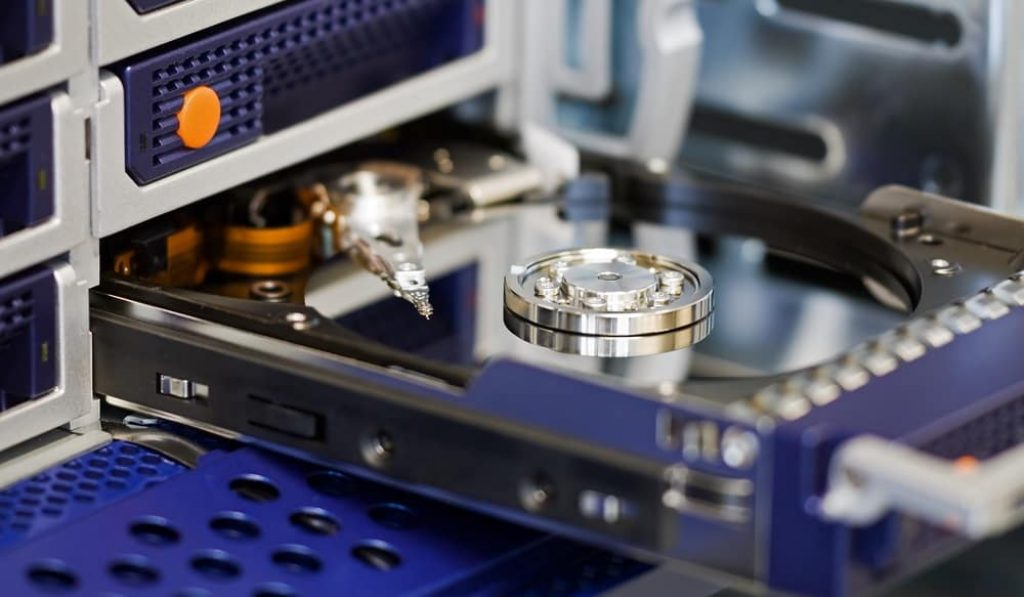What is Hot Swapping & Hot Plugging? How does it work?
Hot swapping and hot plugging enable computer components to connect, disconnect, or exchange while in use. Various devices and interfaces on the computer support the procedures in terms of hardware and software. The plug connections used must have special properties.

If you have already dealt with individual Mini-PC components such as SSDs or the term RAID, you have certainly come across the term hot swapping. We will explain what are these advantages they offers in practice in this article.
What is Hot Swapping?
A hot swap is basically the exchange of PC peripherals while the system is running. The exchange components are not connected to the operating system or other software. This means that neither the power supply is interrupt nor the system is restart.
Let’s assume a fan has a defect while the Mini-PC is running. Thanks to hot swapping, you can easily exchange the damage fan and replace with a new one. You can also swap other components, such as PCIe or SATA drives that are in a RAID array, using hot swapping.
The basis for hot swapping
In order to swap a component using hot swapping, the associated connector must meet certain criteria. The plug contacts must be of a leading design, which means that the contacts are connect and disconnect in a defined sequence, usually in three or more stages. This is realize by a common housing in which the contacts are further forward and further back. The most common systems whose connector contacts are leading-edge are SATA and USB.
The user should also make sure to unplug and, above all, plug in the corresponding connectors as straight and slowly as possible.
What are the advantages of hot swapping?
As already mentioned at the beginning, the advantage of hot swapping is that systems do not have to restart, and no interruption of operation is necessary to replace broken components.
Especially in the area of servers or in industry, where PCs have to be in use 24/7. The fast replacement of components by means of hot swapping offers a decisive advantage. Since even the slightest interruption in operation can mean an enormous loss.
Variants of hot swapping
Hot Add: Refers to the addition of new components that operate without configuration in the running system.
Hot Plug: The addition and removal of components in the running enterprise, as long as no software accesses it, also known as Plug and Play.
What is hot plugging?
Hot plugging or hot plug is a technology that you can exchange computer components during regular operation. This technology is supported by various buses and interfaces and can be seen in Plug-and-Play (PnP), among other things.
Well-known interfaces that support hot-plug are the USB interface. And FireWire according to IEEE 1394, but also the SATA interface, the SCSI interface, the High-Definition Multimedia Interface (HDMI). Also, the DisplayPort, Digital Visual Interface (DVI) or PCI Express support hot-plug technology.
Advantages of hot plugging?
It offers special advantages in storage technology. As it provides better expandability and scalability of the storage disks and higher serviceability without having to shut down the storage system. For this reason, hot plugging plays a special role with SATA.
How does it work?
With SATA, hot plugging is achieved by a modified design of the SATA connector. The contact tongues of the SATA connector are designed with different lengths. Which means that when a memory component is plugged in and unplugged. It is supply with certain voltage levels for longer or sooner. The contact tongues have three different lengths.
Three connection levels are activated between the hard disk and the host system when a component is plugged into a SATA system. The longest contact tongue has ground levels. It avoids electrostatic discharge (ESD) and ensures no voltage difference between the hard disk and the host system ground.
The second longest contact tongues are use in conjunction with the over current protection to ensure no excessive insertion current surge. And the shortest contact tongues provide the connection of the remaining supply voltages as well as for the data lines.
Hot swapping vs. Hot plugging
As we know, hot swapping and hot plugging are terms from the computer environment. They are technical procedures that allow computer components or peripherals to be add, disconnect, or exchange during operation. While hot swapping stands for the exchange of components without interrupting operation. Hot plugging refers to the addition or disconnection of components of a running computer system.
Various interfaces, bus systems, and peripherals support the two methods on both the hardware and the software. For example, USB (Universal Serial Bus), Firewire, HDMI (High-Definition Multimedia Interface), PCMCIA, or SATA (Serial AT Attachment) interfaces are hot-pluggable.
Typical hot-swappable devices are redundant power supplies for servers or the individual hard disks of a RAID array or storage system. It is important that the connectors used are also suitable for this and, for example, have so-called leading contacts.
The significance of hot swapping and hot plugging
Hot swapping and hot plugging are very important in the storage environment. To ensure the ongoing operation of storage systems is disrupted as little as possible. And the replacement of individual defective hard disks does not impair the overall system. It should be possible to add, disconnect or swap hard disks without interrupting the system. Interfaces such as SATA or SCSI are therefore hot-pluggable.
In RAID arrays or storage systems, it is common for hard disks to be replaceable without shutting down the overall system. A replaced hard disk is automatically reloaded with data in a RAID array. The power supply units of large storage systems are also usually designed to be hot-swappable. And allow replacement without shutting down the system in the event of a defect.
Connecting & Disconnecting components
During operation, disconnecting and connecting computer components requires a special design of the connectors used. Certain contacts must be leading. This means that the contacts are closed or opened in a defined sequence when the connection is plugged or unplugged.
For example, it is necessary to make the ground contact first when plugging in and open the ground contact last when disconnecting. So that no damage occurs due to potential differences and electrostatic discharges.
You can realize leading contacts by arranging further forward in the plug connections compared to other contacts. There are often three or more different levels in the contacting sequence. Connectors for interfaces such as SATA or USB have leading contacts, recognizing contact tongues of different lengths.
You can also read these guide:





